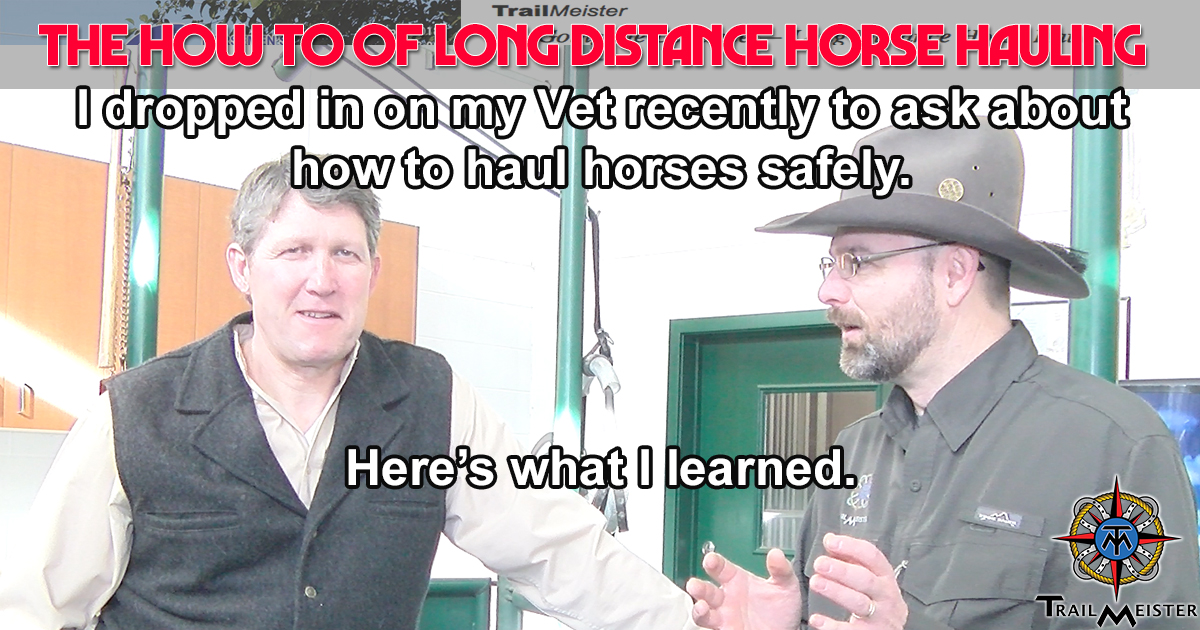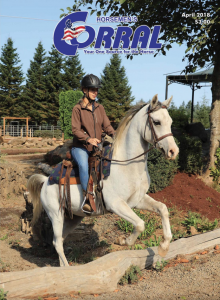 Going the Distance – Long Distance Horse Hauling
Going the Distance – Long Distance Horse Hauling
As published in the April 2018 issue of Horsemen’s Corral
Tis the season for horse riding and camping trips and all the stress that comes along for the ride when traveling with equines.
When the siren song of a new trail gets loud. Well, you’ve got to load that trailer and go. Sometimes those new trails are further away than you’re used to hauling and that alone can create some stress and certainly some questions about how to safely get from A to Nirvana.
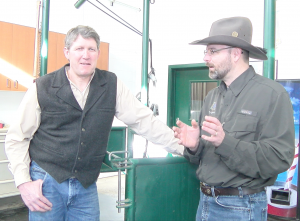 My go-to guy for this kind of information is my vet. Doc Peters of McKinlay & Peters Equine Hospital. Not only is Doc Peters a great DVM he’s a Cowboy Shooting pro who hauls his horses across the country on a regular basis. I dropped in on Doc Peters recently to ask about his thoughts on hauling safely. Here’s what I learned.
My go-to guy for this kind of information is my vet. Doc Peters of McKinlay & Peters Equine Hospital. Not only is Doc Peters a great DVM he’s a Cowboy Shooting pro who hauls his horses across the country on a regular basis. I dropped in on Doc Peters recently to ask about his thoughts on hauling safely. Here’s what I learned.
Preparation is Key
The trailer and what you tow it with should be reliable. To ensure that your hauling vehicle and trailer are ready for the long haul check the following items at a bare minimum:
- Trailer floor – Is it solid? Will it hold your animals safely?
- Electrical System – Are all your lights and brake connections operating?
- Tires – Are they sound and properly inflated? And the spare?
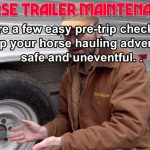 Click here for a quick video about Horse Trailer Maintenance Tips!
Click here for a quick video about Horse Trailer Maintenance Tips!
Your horses and mules also need to be prepared for the long haul. A horse that has never been hauled before shouldn’t take an eight-hour ride for his first introduction to trailering. Start with local trips, and bring along a buddy for your horse to reduce his stress even more.
Besides helping your horse learn that a trailer is a happy place you’ll want to make sure that his traveling papers are up to date. Since I do a fair bit of interstate hauling my paperwork includes at a minimum, a current negative Coggins test and a certificate of veterinary inspection or health certificate and a brand inspection. Requirements for your area may vary, but your vet can help point you in the right direction.
Check, in advance, with your veterinarian for any additional requirements you may need for the state you’re visiting as well as the states you may be driving through to get there.
Remember that equine rules and regulations are different from state to state and they can change without notice. Therefore, it’s important to discuss your travel plans with your veterinarian to determine what documentation is required for your trip. Another thing to ask your vet about are common diseases in the area you’re planning on visiting. For example, here in the Pacific Northwest rabies isn’t a huge concern but in the south, it’s much more prevalent. Those vaccinations need to be done well before you load the trailer.
Other topics to talk with your vet about BEFORE the trip include:
- Equine vital signs – Learn how to take them and what NORMAL is for your animal.
- What to keep in your First Aid kit – You do have one, right?
- Feeding and watering during the drive. How much and how often.
During the Trip
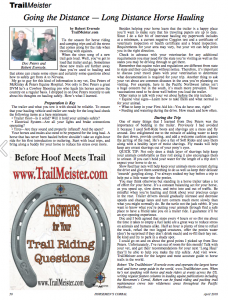 One, of many things that I learned from Doc Peters was the importance of bedding in the trailer. Previously I had avoided it because I used Soft-Ride boots and shavings are a mess and fly around. Doc enlightened me to the miracle of adding water to keep the dust down, provide cooling, and add a welcome cushion against the jarring of the road. He’s also a fan of Soft Rides and uses them along with a healthy layer of moist shavings. Fly masks will help keep any errant shavings out of your pony’s eyes.
One, of many things that I learned from Doc Peters was the importance of bedding in the trailer. Previously I had avoided it because I used Soft-Ride boots and shavings are a mess and fly around. Doc enlightened me to the miracle of adding water to keep the dust down, provide cooling, and add a welcome cushion against the jarring of the road. He’s also a fan of Soft Rides and uses them along with a healthy layer of moist shavings. Fly masks will help keep any errant shavings out of your pony’s eyes.
QUICK TIP – Not only does a thick layer of shavings help keep your animals comfortable as they roll along it also encourages them to urinate. If you can’t hold your water for the length of a trip don’t expect your horse to do so.
Slow feed hay nets will help keep your animals more content during the drive and give them something to do as well as keep their delicate “innards” gurgling along. I’ve always soaked my hay before a trip to help put a little water into the ponies.
You may think otherwise but standing in a horse trailer takes a lot of effort for your horse. It’s a constant balancing act for your horse, as you speed up, slow down, and twist into and out of traffic. Be mindful when you’re hauling and think about your precious cargo in the rear. Trailer drivers should gradually increase and decrease speeds and change lanes and turn corners much more slowly than what you might normally do. Be the turtle, not the jack rabbit. If you want to know what you’re putting your animals through find a safe place to have a friend take you on a trailer ride. I guarantee it’ll be an eye-opening experience.
Doc and I both agreed that stops every 4 hours or so (for me about the time it takes to empty a fuel tank) are a great way to reduce stress on animals and humans alike. Half an hour is plenty of time to refuel the truck, refuel the two-legged creatures, offer the ponies water (don’t be surprised if they don’t drink much) and re-fill their hay net. Be kind and try to park in a shady spot.
I could go on and on about the good points I picked up from Doc Peters. Unfortunately, I’ve run out of room for this month! Talk with your vet, and get their recommendations for your next “Long Haul” they’ll be able to help you make the trip safely. And visit www.TrailMeister.comfor the largest and most accurate guide to horse trails in the world.


